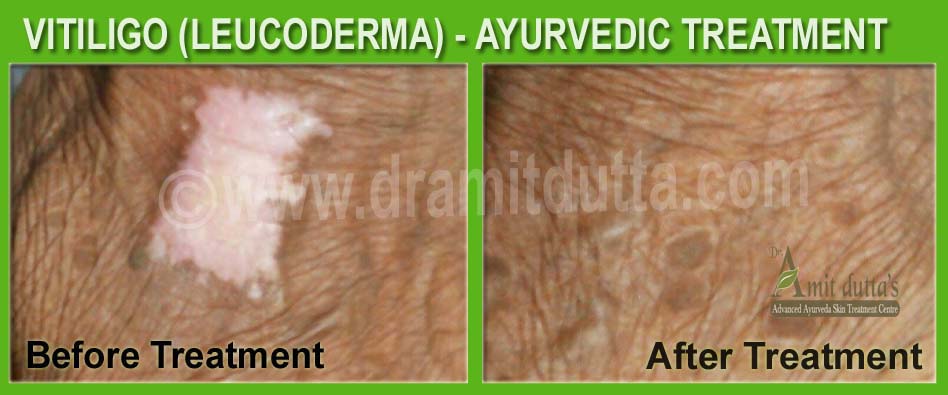Sign and Symptoms of Vitiligo
Sign and Symptoms of Vitiligo
SIGNS AND SYMPTOMS OF VITILIGO
EARLY SIGNS & SYMPTOMS
According to Ayurveda Signa and Symptoms are called – Purvrupa
- Excessive or absence of perspiration
- Discolouration patches on the skin.
- Itching , Pricking sensation , Physical exhaustion and Mental fatigue.
CLINICAL FEATURES
SIGNS AND SYMPTOMS
According to Ayurveda Clinical features are Known as RUPA
Darun – Whenthe dosha chiefly vitiated the rakta or the blood , the patches will be red in colour.
Carun – When the dosha chiefly vitiates the mamsa or the muscle tissues , the patches will be coppery in colour
Kilasa – When the dosha chiefly vitiates the medas or the fats , the patches will be white in colour – this is the most common clinical presentation or Rupa of the Shivtra , that is why leucoderma is called Kilasa.
Pathogenesis of the VITILIGO
This is called Samprapti according to Ayurveda.
According to the ayurvedic texts the three vitiated dosha mix with the dhatus namely Rasa , Rakta , Mamsa ,Medas and these results in white patches. Ayurveda considers that the Leucoderma is caused by some morbidity of the liver , which is a vitiation of the Pitta Dosha.
Vata dosha accumulates in the purishvaha srotas resulting in poor elimination of the waste of body. Then it overflows into the Rasa and Rakta dhatu. When vata relocates to the rasa and rakta dhatu it results in deficient flow through the rasa and raktvaha strotas. Coupled with pitta vitiation , in due course , an altered functioning of the liver occurs , which in turn contributes to impaired elimination of the impurities from the body.
In Ayurveda it is understood that the deficient flow through the raktvaha srotas vitiates the Poshaka Rakta ( The building blocks of the mamsa dhatu ). Since the mamsa dhatu is responsible for healthy skin , it stands to reason that an impairment of the skin may result . In essence an accumulation of the vata and pitta dosha and the AMA – in the srotas and dhatus of the body is resulting in impaired function as we;; as inferior production of the tissues consequently.
THE SIGNS AND SYMPTOMS OF VITILIGO ARE
The main signs and symptoms of the vitiligo is the loss of the pigment that creats milky white patches on the skin. The other sings may includes
Premature whitening or greying of the hairs of the scalp , eyelashes , eyebrows or beard.
Loss of colour in the tissues that line the inside of the mouth- mucous membranes.
Although any part of the body may be affected by vitiligo , depigmentation usually first develops on the sun exposed areas of the skin , such as hands , feet , arms , face and lips.
Vitiligo generally appears in one of the three following patterns.
FOCAL— the depigmentation is limited to one or few areas of the body.
SEGMENTAL – Loss of the skin colour that occurs on only one side of the body.
GENERALIZED – Pigment loss is widespread across many parts of the body.
Vitiligo may start at any age , but often it appears between the ages of 20 to 30 . the white patches may begin on the face ,eyes, neck , armpit , elbows , genetalia , hands and knees. They are often symmetrical and can spread over the entire body.
In vitiligo the patient feels normal skin texture and sensation. Some immune disorders may also trigger the condition or vitiligo may arise due to that Auto immune disorders like – Addison’s Disease , Vit B -12 deficiency , Pernicious anaemia , thyroid disorders.
The natural course of the vitiligo is difficult to predict. Sometimes the patches stop forming without any treatment . in some cases the loss of pigment may involve most of the skin surface.

